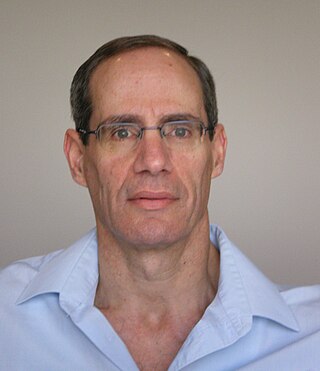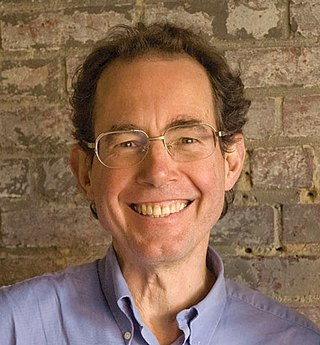Related Research Articles

Ian Grant Macdonald was a British mathematician known for his contributions to symmetric functions, special functions, Lie algebra theory and other aspects of algebra, algebraic combinatorics, and combinatorics.
Benedict Hyman Gross is an American mathematician who is a professor at the University of California San Diego, the George Vasmer Leverett Professor of Mathematics Emeritus at Harvard University, and former Dean of Harvard College.

Noga Alon is an Israeli mathematician and a professor of mathematics at Princeton University noted for his contributions to combinatorics and theoretical computer science, having authored hundreds of papers.
In mathematics, Macdonald polynomialsPλ(x; t,q) are a family of orthogonal symmetric polynomials in several variables, introduced by Macdonald in 1987. He later introduced a non-symmetric generalization in 1995. Macdonald originally associated his polynomials with weights λ of finite root systems and used just one variable t, but later realized that it is more natural to associate them with affine root systems rather than finite root systems, in which case the variable t can be replaced by several different variables t=(t1,...,tk), one for each of the k orbits of roots in the affine root system. The Macdonald polynomials are polynomials in n variables x=(x1,...,xn), where n is the rank of the affine root system. They generalize many other families of orthogonal polynomials, such as Jack polynomials and Hall–Littlewood polynomials and Askey–Wilson polynomials, which in turn include most of the named 1-variable orthogonal polynomials as special cases. Koornwinder polynomials are Macdonald polynomials of certain non-reduced root systems. They have deep relationships with affine Hecke algebras and Hilbert schemes, which were used to prove several conjectures made by Macdonald about them.
In mathematics, the n! conjecture is the conjecture that the dimension of a certain bi-graded module of diagonal harmonics is n!. It was made by A. M. Garsia and M. Haiman and later proved by M. Haiman. It implies Macdonald's positivity conjecture about the Macdonald polynomials.

Jiří (Jirka) Matoušek was a Czech mathematician working in computational geometry and algebraic topology. He was a professor at Charles University in Prague and the author of several textbooks and research monographs.
In mathematics, a double affine Hecke algebra, or Cherednik algebra, is an algebra containing the Hecke algebra of an affine Weyl group, given as the quotient of the group ring of a double affine braid group. They were introduced by Cherednik, who used them to prove Macdonald's constant term conjecture for Macdonald polynomials. Infinitesimal Cherednik algebras have significant implications in representation theory, and therefore have important applications in particle physics and in chemistry.

Andrei Vladlenovich Zelevinsky was a Russian-American mathematician who made important contributions to algebra, combinatorics, and representation theory, among other areas.
Sara Cosette Billey is an American mathematician working in algebraic combinatorics. She is known for her contributions on Schubert polynomials, singular loci of Schubert varieties, Kostant polynomials, and Kazhdan–Lusztig polynomials often using computer verified proofs. She is currently a professor of mathematics at the University of Washington.

Bruce Eli Sagan is an American Professor of Mathematics at Michigan State University. He specializes in enumerative, algebraic, and topological combinatorics. He is also known as a musician, playing music from Scandinavia and the Balkans.
Aubrey William Ingleton (1920–2000) was an English mathematician.

Michelle Lynn Wachs is an American mathematician who specializes in algebraic combinatorics and works as a professor of mathematics at the University of Miami.
Stephen Carl Milne is an American mathematician who works in the fields of analysis, analytic number theory, and combinatorics.
Hélène Barcelo is a mathematician from Québec specializing in algebraic combinatorics. Within that field, her interests include combinatorial representation theory, homotopy theory, and arrangements of hyperplanes. She is a professor emeritus of mathematics at Arizona State University, and deputy director of the Mathematical Sciences Research Institute (MSRI). She was editor-in-chief of the Journal of Combinatorial Theory, Series A, from 2001 to 2009.
Elchanan Mossel is a professor of mathematics at the Massachusetts Institute of Technology. His primary research fields are probability theory, combinatorics, and statistical inference.
The Garsia–Wachs algorithm is an efficient method for computers to construct optimal binary search trees and alphabetic Huffman codes, in linearithmic time. It is named after Adriano Garsia and Michelle L. Wachs.
Sue Geller is an American mathematician and a professor emerita of mathematics at the department of mathematics at Texas A&M University. She is noted for her research background in algebraic K-theory, as well as her interdisciplinary work in bioinformatics and biostatistics, among other disciplines.
Jennifer Leigh Morse is a mathematician specializing in algebraic combinatorics. She is a professor of mathematics at the University of Virginia.
Martin Liebeck is a professor of Pure Mathematics at Imperial College London whose research interests include group theory and algebraic combinatorics.
Te Chiang Hu was a Chinese-American computer scientist and operations researcher known for his work in the design and analysis of algorithms. His contributions to network flow problems included the representation of all pairwise flows using the Gomory–Hu tree,[GH61] the formulation of the multi-commodity flow problem,[H63] and a textbook on flow problems.[HY69] He also published highly cited algorithms for scheduling tree-structured tasks,[H61a] the widest path problem,[H61b] optimal binary search trees,[HT71] linear layouts of trees and graphs,[AH73] minimum routing cost spanning trees,[H74] and the matrix chain multiplication problem.[HS82]
References
- ↑ Knuth, Donald E. (1998), "Algorithm G (Garsia–Wachs algorithm for optimum binary trees)", The Art of Computer Programming, Vol. 3: Sorting and Searching (2nd ed.), Addison–Wesley, pp. 451–453. See also History and bibliography, pp. 453–454.
- ↑ "C.V. of Adriano Garsia". math.ucsd.edu. Retrieved 1 June 2023.
- ↑ "Emeriti Faculty | Department of Mathematics". math.ucsd.edu. Retrieved 1 June 2023.
- ↑ "Garsiafest". sites.google.com. Retrieved 1 June 2023.
- ↑ List of Fellows of the American Mathematical Society, Retrieved 19 January 2013.